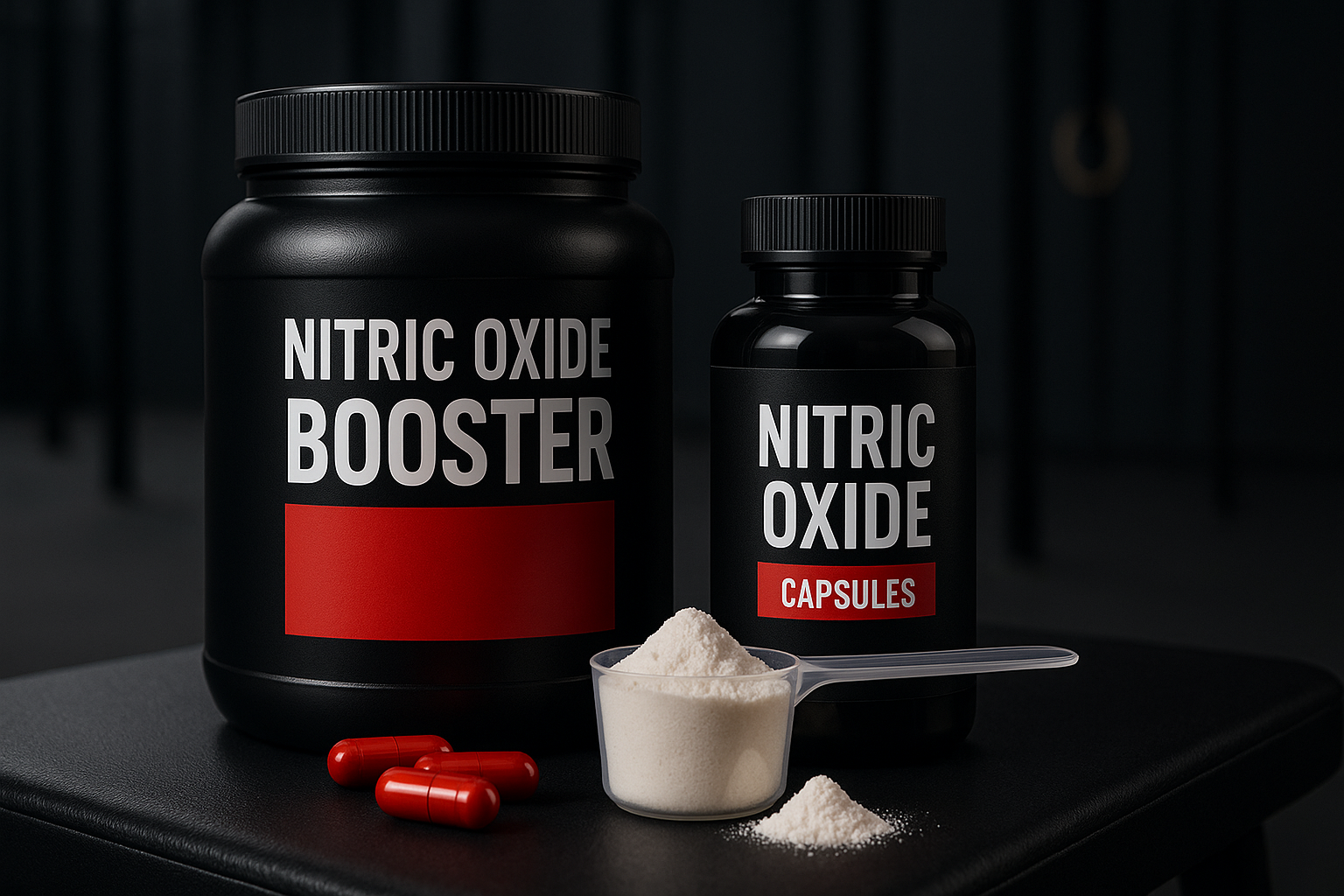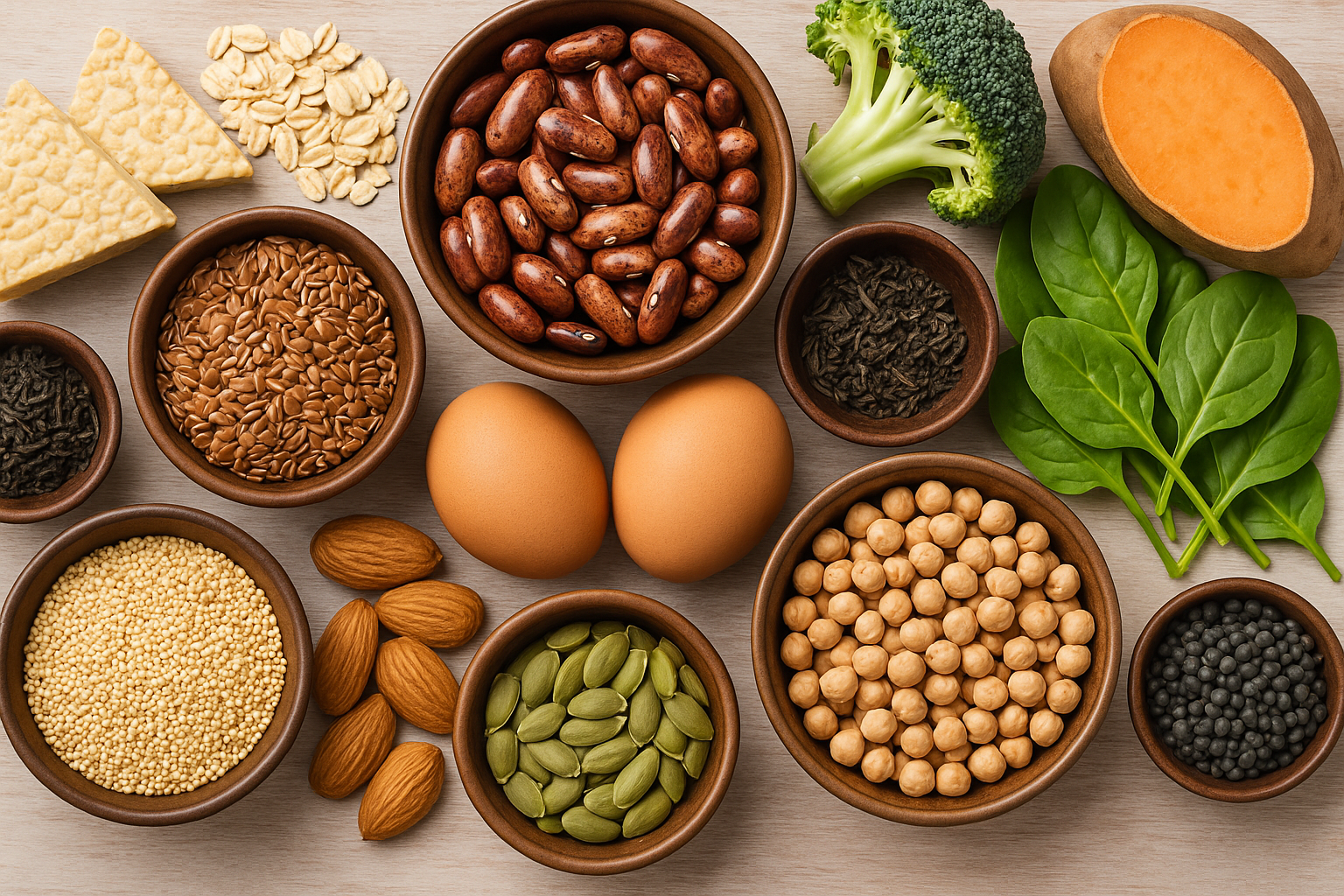Introduction
Eating healthy is more than a dietary choice; it’s a lifestyle commitment that leads to enhanced well-being, increased energy levels, and overall health improvement. The cornerstone of a nutritious diet is balance, ensuring that every meal is a harmonious blend of macronutrients (proteins, carbohydrates, and fats) and micronutrients (vitamins and minerals). This balance is crucial not only for bodily functions but also for maintaining a healthy weight, preventing chronic diseases, and fostering a positive mental state.
Yet, the concept of a “healthy meal” can often seem complex and overwhelming due to the abundance of dietary advice available. The key lies in understanding that nutritious eating doesn’t have to involve strict limitations or giving up the foods you love. Instead, it’s about finding ways to include a variety of foods in your diet that nourish your body, satisfy your taste buds, and make you feel your best.
The impact of nutrition on overall health cannot be overstated. From boosting your immune system to enhancing your mood, the foods you eat play a pivotal role in every aspect of your health. With this guide, we aim to demystify the process of crafting healthy meals. By focusing on the essentials of a balanced plate, hydration, portion control, and smart snacking, we’ll show you how to create meals that are not just nutritious but also delicious and fulfilling.
Embarking on this journey towards healthier eating habits is an investment in your long-term health and happiness. With each meal, you have the opportunity to fuel your body optimally, setting the foundation for a vibrant, energetic, and healthy life.
The Essentials of a Healthy Plate
Creating a healthy plate is an art that balances taste, nutrition, and variety. This section delves into the fundamental components of a nutritious meal, ensuring each dish contributes positively to your health and well-being.
Vegetables: The Foundation of Nutrition
Vegetables should occupy a significant portion of your plate, offering a spectrum of colors and nutrients. Here’s why and how to include more in your diet:
- Variety is Key: Different colors represent different nutrients. For instance, dark leafy greens are rich in iron and calcium, while orange vegetables like carrots and sweet potatoes are high in vitamin A.
- Incorporation Tips: Add vegetables to every meal, whether it’s spinach in your morning smoothie, a salad with lunch, or roasted veggies for dinner. Snack on raw veggies with hummus for a nutrient-packed treat.
Proteins: Building Blocks for a Healthy Body
Protein is essential for muscle repair, immune function, and satiety. Here’s how to choose and incorporate lean and plant-based proteins:
- Lean Options: Opt for poultry, fish, and plant-based proteins like beans and lentils. These sources are lower in saturated fat and calories.
- Meal Ideas: Incorporate grilled chicken or fish into salads, use beans as a base for soups and stews, or add tofu to stir-fries for a protein boost.
Whole Grains: Sustained Energy Sources
Whole grains provide complex carbohydrates, fiber, and essential nutrients, making them an important part of a balanced diet:
- Benefits Over Refined: Whole grains retain all parts of the grain, providing more fiber, vitamins, and minerals than refined grains.
- Diet Integration: Swap white bread, pasta, and rice for whole grain alternatives. Experiment with grains like quinoa, barley, and farro for variety.
Healthy Fats: Essential for Brain and Heart Health
Fats are crucial for nutrient absorption, brain health, and more. Here’s how to incorporate healthy fats into your meals:
- Good Fat Sources: Avocados, nuts, seeds, and olive oil are excellent sources of monounsaturated and polyunsaturated fats.
- Usage Ideas: Dress salads with olive oil-based vinaigrettes, snack on a handful of almonds, or add avocado to sandwiches and salads.
Balancing these components on your plate not only ensures a nutritious meal, but also keeps eating enjoyable and satisfying. Remember, the goal is to nourish your body and enjoy your food, creating a healthy and sustainable eating pattern. By focusing on variety, quality, and balance, you can create meals that support your health and delight your taste buds.
Hydration and Portion Control
Hydration and portion control are two pivotal, yet often overlooked, elements of a healthy eating plan. Understanding and implementing these aspects can significantly enhance the benefits of your nutritional choices.
The Role of Water in Your Diet
Water is fundamental to life, playing a critical role in numerous bodily functions, including digestion, nutrient transport, and temperature regulation. Here’s how to stay adequately hydrated:
- Daily Intake: While the “8 glasses a day” rule is a good starting point, individual needs vary based on activity level, climate, and personal health. Listen to your body and drink when you’re thirsty.
- Flavor Infusions: If you find plain water monotonous, infuse it with fruits, cucumbers, or herbs. This can make hydration more enjoyable and encourage you to drink more throughout the day.
Mindful Eating and Portion Sizes
Eating mindfully and understanding portion sizes can help prevent overeating and ensure you’re getting just the right amount of food to fuel your body without excess:
- Listening to Hunger Cues: Pay attention to your body’s signals. Eat when you’re hungry and stop when you’re comfortably full, not stuffed.
- Visual Cues for Portioning: Use your hand as a guide for portion sizes – a clenched fist for carbs, a palm-sized serving of protein, and a thumb-sized portion of fats. Fill at least half your plate with vegetables to ensure a nutrient-dense meal.
Strategies for Staying Hydrated and Practicing Portion Control
- Carry a Water Bottle: Having water on hand at all times makes it easier to stay hydrated throughout the day.
- Use Smaller Plates: This can naturally help reduce portion sizes without feeling deprived.
- Eat Without Distractions: Avoid eating in front of the TV or computer. Being mindful of your food allows you to enjoy it more and recognize satiety signals.
Hydration and portion control are integral to maintaining balance in your diet. By focusing on these aspects, you can enhance your overall health, improve digestion, and manage your weight effectively. Remember, the goal is to nourish your body and respect its needs, creating a foundation for long-term health and well-being.
Snacking Smart and Satisfying Sweets
Smart snacking and making wise choices when it comes to sweets are crucial for maintaining a balanced diet while indulging in the flavors you love. These strategies can help you navigate between meals and treat yourself without compromising your health goals.
Choosing Nutritious Snacks
Snacks can and should be part of a healthy diet, offering an opportunity to fuel your body between meals and keep your energy levels steady. Here’s how to snack smart:
- Opt for Whole Foods: Fresh fruits, vegetables, nuts, seeds, and yogurt are excellent snack options that provide a mix of vitamins, minerals, fiber, and protein.
- Plan Ahead: Prepare healthy snacks in advance to ensure you have good choices on hand, preventing the temptation to reach for less nutritious options.
- Portion Control: Even when snacking on healthy items, be mindful of portions. Pre-portion snacks to avoid overeating.
Healthy Alternatives to Satisfy Sweet Cravings
Sweets don’t have to be off-limits in a balanced diet. It’s about choosing the right types of treats and enjoying them in moderation:
- Fruit-Based Desserts: Satisfy your sweet tooth naturally with fruit. Berries, apples, and peaches can be used in various desserts that offer sweetness along with fiber and nutrients.
- Dark Chocolate: Opt for dark chocolate with a high cocoa content as a source of antioxidants. A small piece can be a satisfying way to end a meal.
- Homemade Treats: By preparing your own sweets, you can control the ingredients and substitute healthier options, like using natural sweeteners or whole grain flours.
Strategies for Snacking and Enjoying Sweets
- Mindful Eating: Take the time to really enjoy your snacks and sweets without distraction. This helps you feel satisfied with smaller amounts.
- Balance and Moderation: Incorporate snacks and sweets in a way that they complement, rather than replace, the nutritious components of your diet.
- Listen to Your Body: Understand the difference between physical hunger and emotional cravings. Eating sweets should be a conscious choice, not a response to stress or boredom.
Snacking smart and finding balanced ways to enjoy sweets can enhance your dietary pattern without derailing your nutrition goals. By choosing nutrient-dense snacks and satisfying treats mindfully, you can enjoy the best of both worlds—flavor and health.
Putting It All Together
Combining the elements of balanced nutrition, hydration, portion control, and mindful snacking creates a comprehensive approach to healthy eating that can fit into any lifestyle. Here’s how to apply these principles to your daily routine for a sustainable, enjoyable diet that supports your health and well-being.
Sample Meal Ideas for Inspiration
- Breakfast: Start your day with a bowl of oatmeal topped with fresh berries, a dollop of Greek yogurt, and a sprinkle of chia seeds for a mix of whole grains, protein, healthy fats, and fiber.
- Lunch: Assemble a vibrant salad with mixed greens, cherry tomatoes, cucumbers, grilled chicken, avocado, and a quinoa side. Dress it with olive oil and lemon juice for a satisfying, nutrient-rich meal.
- Dinner: Prepare a piece of salmon baked with lemon and herbs, served with a side of roasted sweet potatoes and steamed broccoli. This meal offers a perfect balance of protein, healthy fats, and vegetables.
- Snacks: Keep handy a mix of almonds and dried cranberries for a quick energy boost, or slice an apple and pair it with almond butter for a filling snack.
Tips for Meal Planning and Prep
- Plan Your Meals: Take some time each week to plan your meals. This helps ensure you have the ingredients on hand and can make healthier choices.
- Prep in Advance: Whenever possible, prepare parts of your meals ahead of time. Pre-cut vegetables, cook grains, or marinate proteins can save you time during the week.
- Be Flexible: While planning is helpful, be open to adjusting based on what’s fresh and available or how you’re feeling. The goal is to make healthy eating enjoyable and sustainable.
Encouragement for a Balanced Approach to Eating
Eating healthy is a journey, not a destination. It’s about making choices that support your health while also fitting your lifestyle and preferences. Remember, occasional indulgences are part of a balanced diet and can be enjoyed without guilt. The key is mindfulness and moderation.
Balance, variety, and moderation are the cornerstones of a healthy diet. By incorporating a wide range of nutritious foods, staying hydrated, practicing portion control, and choosing snacks and sweets wisely, you can enjoy delicious meals that nourish your body and soul. This holistic approach to eating not only supports your physical health but also enhances your overall quality of life. Welcome to a world where eating healthy is not just good for you, but also a source of joy and satisfaction.
Conclusion
Embarking on the path to healthier eating is a valuable and transformative journey, one that enriches both your body and mind. By understanding and applying the principles of balanced nutrition, hydration, portion control, and mindful snacking, you create a foundation for a lifestyle that supports vitality, well-being, and enjoyment of food.
The key takeaways from this guide—incorporating a variety of vegetables, choosing lean proteins, integrating whole grains, opting for healthy fats, staying hydrated, and eating mindfully—serve as pillars for constructing meals that are not only nutritious but also fulfilling and delicious. Remember, healthy eating is not about strict restrictions or monotony; it’s about finding harmony in the foods you eat, enjoying the vast array of flavors nature offers, and listening to your body’s needs.
As you move forward, keep in mind that flexibility and moderation are essential. Life is unpredictable, and so are our bodies’ needs. Some days you might crave something sweet, and other times, you might want a hearty, savory meal. Allowing yourself the freedom to indulge mindfully means that you’re more likely to stick to healthy eating habits in the long run.
Ultimately, the goal of eating well is to nourish your body, support your health goals, and enjoy your life to the fullest. Food is one of life’s greatest pleasures and a powerful tool for maintaining health. Embrace the journey of exploring new foods, experimenting with recipes, and finding what works best for you. Here at Empowerise we offer through our coaching programs a balanced approach to eating, where nutrition meets satisfaction, and every meal is a step toward a healthier, happier you.
Top 5 FAQ
1. How can I make vegetables taste better?
- Experiment with different cooking methods like roasting, grilling, or sautéing. Use herbs and spices to add flavor without extra calories.
2. What are some examples of lean proteins?
- Examples include chicken breast, turkey, fish, tofu, legumes, and eggs. These options are lower in fat and calories but high in protein.
3. Are carbs bad for you?
- Not all carbs are created equal. Whole grains, like quinoa, brown rice, and whole wheat products, are packed with nutrients and fiber and are an important part of a balanced diet.
4. How much water should I be drinking?
- The general recommendation is about 8 glasses (64 ounces) per day, but this can vary based on activity level, climate, and individual needs.
5. Can I still eat sweets on a healthy diet?
- Yes, in moderation. Opt for natural sweeteners and choose dark chocolate or fruit-based desserts to satisfy your sweet tooth without compromising nutrition.
Further reading
CDC – Benefits of Healthy Eating for Adults: This page outlines the numerous health benefits of a balanced diet, including stronger immunity, lower risk of chronic diseases, and improved overall well-being. It’s a great resource to highlight why healthy eating is essential for long-term health.
Nutrition.gov – Healthy Eating: This site provides practical tips and resources to help you incorporate a variety of foods into your diet, including vegetables, fruits, proteins, grains, and dairy. It also offers guidance on making nutritious choices when dining out or preparing meals at home.
NHLBI – Healthy Eating Plan: This page from the National Heart, Lung, and Blood Institute offers detailed information on creating a healthy eating plan that includes all necessary nutrients while maintaining appropriate calorie levels. It also includes tips for portion control and reducing intake of unhealthy fats and added sugars.






